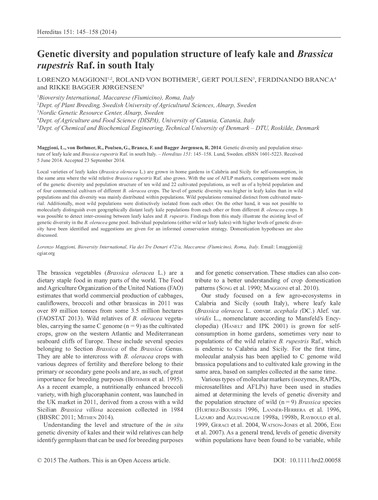Genetic diversity and population structure of leafy kale and Brassica rupestris Raf. in south Italy
Local varieties of leafy kales ( Brassica oleracea L.) are grown in home gardens in Calabria and Sicily for self-consumption, in the same area where the wild relative Brassica rupestris Raf. also grows. With the use of AFLP markers, comparisons were made of the genetic diversity and population structure of ten wild and 22 cultivated populations, as well as of a hybrid population and of four commercial cultivars of different B. oleracea crops. The level of genetic diversity was higher in leafy kales than in wild populations and this diversity was mainly distributed within populations. Wild populations remained distinct from cultivated material. Additionally, most wild populations were distinctively isolated from each other. On the other hand, it was not possible to molecularly distinguish even geographically distant leafy kale populations from each other or from different B. oleracea crops. It was possible to detect inter-crossing between leafy kales and B. rupestris . Findings from this study illustrate the existing level of genetic diversity in the B. oleracea gene pool. Individual populations (either wild or leafy kales) with higher levels of genetic diversity have been identifi ed and suggestions are given for an informed conservation strategy. Domestication hypotheses are also discussed.

